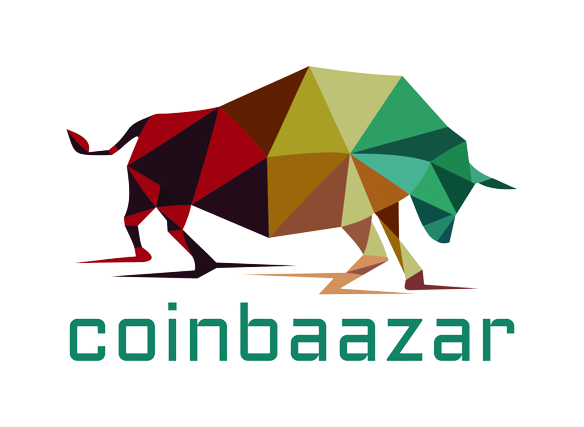Sales of real estate in the Metaverse surpassed $500 million in 2021, setting a new record. Sales are predicted to increase much higher, according to information from broker Raymond S. Beckford.
Not just the typical 9-to-5 demographic is investing in the Metaverse real estate market, according to Beckford. “We’re talking about folks who also invest their free time. Recently, one of our agents struck a deal with a man who earns his money by playing golf in the metaverse.”
Location, location, location—not emotions—are what matter most in real estate. Consider the long-term worth of the “location” (i.e., the platform, scarcity, and neighbourhood) before investing. This is generally considered to be true for the physical world, and a similar idea applies to virtual real estate. (For more advice on investing in the Metaverse, see below.)
What is NFT Real Estate in the Metaverse?
Digital assets known as NFTs are unique and non-replicable.
Metaverse NFTs stand for virtual world property ownership in the digital realm. (Consider them as titles to digital land.)
The Metaverse is (or will be) a social virtual reality network where users can connect while experiencing surroundings that are uniquely tailored to them. Blockchain technology will be crucial for processing payments and keeping track of who owns what in the Metaverse, according to Matthew Ball in his excellent book The Metaverse.
NFTs are exclusive and cannot be duplicated, much like a piece of land. Additionally, because they are software that can be programmed, they have the ability to perform complex tasks like ownership transfers or automated payment when certain criteria are satisfied.
When physical and digital land is owned, there are certain key differences.
- The buying and selling of Metaverse NFTs is not done through real estate agents.
- Metaverse NFTs don’t entail any commissions (although there are transaction fees to consider).
- Transactions don’t involve any pricey third parties like mortgage firms or title agencies.
- Crypto currencies are used for transactions.
This implies that buyers and sellers can send and receive cryptocurrency payments using their digital wallets. Additionally, it makes digital real estate available to those who lack access to traditional banking systems.
Each NFT can also be used to trace an asset’s provenance and ownership. Since the token cannot be duplicated, authenticity and uniqueness are guaranteed.
A virtual deed known as a real estate NFT ensures that your virtual parcel of land is the only one of its kind.
Like any unique thing in the physical world, NFT tokens may be incredibly valuable due to their uniqueness. An NFT ensures the uniqueness of any item by acting as a virtual deed of ownership (and yes, you can use this type of token in place of traditional legal paperwork).
The Top Metaverse Initiatives
We’ll be talking about the four most well-known initiatives now building the Metaverse: Decentraland, The Sandbox, Somnium Space, and Voxels.
Decentraland
Symbol: MANA
With a market capitalisation of $1.54 billion
Total items 97,600
The pricing range starts at 2.65 ETH.
Total Volume: 228,600 ETH.
The Ethereum blockchain powers the immersive VR platform Decentraland, where anybody can produce, use, and make money from content and applications. By purchasing or renting land parcels in a huge virtual environment, users can develop, enjoy, and monetize content and applications. It’s like Ready Player One meets Minecraft meets Second Life (with the added benefits of being decentralized).
Over the course of four rounds, the company has raised $25.5 million in capital. On November 18, 2021, a secondary market round was raised in their most recent round. Investors in it included Digital Currency Group and Broslyn Capital. (Look up Decentraland properties on OpenSea.)
The Sandbox
Ticker: Sand
Market capitalization: of $1.08bn
Total items: 142,100
Floor price: 1.90 ETH
Volume: 159,700 ETH
A toolbox for making social VR experiences is called The Sandbox. It lets programmers to create multiplayer games with cross-platform compatibility for desktop PCs via SteamVR, Oculus Rift, and HTC Vive headsets. With the aid of technologies like the Unity 3D game engine, individuals can even design their own personal social VR experiences.
The project has also successfully raised $95 million in funding across four stages, with the most recent round taking place on December 9, 2021. Adrian Cheng, Softbank, and Blue Pool Capital are a few of the leading investors. (Look up Sandbox attributes on OpenSea.)
Somnium Space
Ticker: Cube
Market Cap: $19.3 million
Total Items: 5,800
Floor Price: 0.50 ETH
Volume: 27,000 ETH
Another open-world metaverse with a focus on interaction and avatar creation is Somnium Space. You can explore a vast cosmos full of planets, asteroids, star ships, and more while dressing whatever you like and interacting with people through chat rooms and group activities.
Your dreams’ rocket ship is called Somnium Space.
The most recent fundraising round, which totalled $1 million, took place on May 8, 2019, for the start up. (Search properties in Somnium Space on OpenSea.)
Voxels (formerly Cryptovoxels)
Ticker: N/A
Capitalization of the market: N/A
Total Items: 7,900 pieces altogether
Floor Price: 0.90 ETH
Volume: 25,100 ETH
Voxels may be more up your alley if you enjoy Minecraft but want something more immersive than merely playing with blocks in 2D space. With the help of 3D models or by importing pre-existing ones from well-known online sources like Sketchfab or MyMini Factory, users may construct their own worlds in this metaverse, which combines all of Minecraft’s creativity into an interactive setting.
In terms of popularity and user base, the platform frequently comes in third place, just below Decentraland and The Sandbox. Voxels is ranked sixth ($38MM) in terms of all sold parcels, according to MetaCat. (Explore the qualities of Voxels on OpenSea.)
Putting money into the Metaverse
Start by looking for real estate NFTs that have a solid case for appreciating in value. Not only duplicates of previous NFTs, but NFTs with original narratives or goals, should be sought out. Being “first to market” with a successful formula or strategy counts as well as originality.
Second, learn when and who released the NFTs for the first time. Imagine that a firm like Disney published an NFT for property in an online Disneyland. It would probably be a wise investment over the long term due to the Disney brand’s enduring influence.
Third, determine if the perceived value of the NFT is high. Is it unusual? Is it challenging to obtain? Would people like it? Consider NFTs to be collectibles (for more information, check our Guide to Investing in NFTs).
Search for NFTs on platforms with a strong ecosystem, like the fourth tip. One such platform is Decentraland, whose crowd funded event sold out in just two minutes. During the sale, MANA tokens valued at $25 million were acquired by the initiative, which is still expanding. Major corporations like Coca-Cola, Samsung, Nike, and Atari are using the Decentraland platform to expand their influence in the Metaverse, so it’s not just for fun.
Finally, be cautious of volatility when making investments in the Metaverse. Because NFTs are non-fungible, they cannot be exchanged like stocks or bonds. Additionally, you cannot just purchase them and sell them for cash at any time because they are not an accurate representation of actual assets like gold or oil. This implies that it can take some time before an NFT sells. These are not assets that are very liquid.
Conclusion
Although investing in the Metaverse carries risk, it also has a tremendous potential for gain. According to our investment philosophy, NFTs should comprise no more than 1% of your overall investment portfolio, and you should be prepared to hold them for at least five years.
Thoughtfully considering what you’re actually buying, like with any collectible, will help you make a smarter real estate non-profit purchase. It’s tempting to let trends and popularity affect your decision-making.

